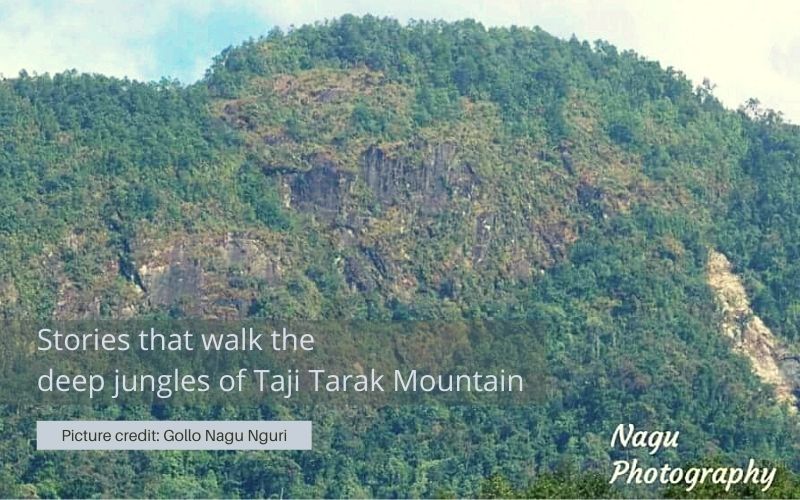
Stories that walk the deep jungles of Taji Tarak Mountain
Like any other indigenous settlements, the tribal communities of Arunachal Pradesh have been following the practice of passing down the folklores of the land to the coming generations. One of such stories is the tale of Taji Tarak Mountain of Arunachal Pradesh, which is located near the Kidding, Kullung and Tapo villages of Mengio circle of Papum Pare district.
The
mountain gets its name from the local dialect of the Nyishi community of Arunachal
Pradesh. Taji Tarak stands for a rocky mountain laden with broom grasses, as
the Taji translates into broom and Tarak into a rocky mountain. It has often
been considered to look like Sabbey Hangtang which means the back portion of a Mithun.
Many nearby dwellers have claimed to have seen tigers and wild animals in the
area during their hunting and fishing expeditions; it is a long traditional
practice of the village populace in Arunachal Pradesh. The mountain also
presents a vantage point to enjoy the panoramic view of the Mengio Circle. However,
it’s popularity is not drawn from its scenic beauty, but due to the many folklores
it is associated with.
One popular folk tale follows that the Taji Tarak Mountain was once home to the invisible beings called ‘Mig-Mire’. They used to dwell in the deep forests of the mountain where they grew different types of fruits borne of magic. Notable mentions among the fruits grown were the Nyari-Yokka and Uppum-Ujuk which are believed to be a special kind of gourd. These were used to carry water and local beverages by them. But they weren’t the only ones in the story. Somewhere near, there lived an invisible dragon known by the name of Martung Tam who used to rule the world. In order to display the grandeur of his power and dominance, one day he swallowed the sun which was the only source of life on Earth. The deep darkness that followed, caused the Tam Dimik Nam (Solar Eclipse) to occur. This behavior didn’t really please the Mig-Mire. They were so much angered by the incident that they decided to take the dragon down in order to rescue the sun. The furious Mig-Mire took out their bows and shot arrows aimed at the invisible dragon. The attack was so powerful that it went right through the heart of Martung Tam and it was bound to release the sun from its clutches. This way the Mig-Mire of the mountain ended the solar eclipse and restored the sun back to normal.
The
folklores prevalent around the Taji Tarak Mountain vary a lot from each other.
These stories revolve around different subjects, but are all equally thrilling to
the ears. Another such popular story is about an old man who accidently set fire
to the mountain. He was actually in search of his Sabbey (mithun) in the
jungle. During the search, he mistakenly set a fire inside the jungle which
eventually grew out of control and engulfed the entire forest of Taji Tarak.
But that’s not all. The fire apparently led to the destruction of the home of
the Mig-Mire, where they grew magical fruits. As per the story, the fire also
claimed the life of Mig Mire’s daughter, who was loved very dearly. The old man
died a few years later the incident. There is a strong belief among the elders
that it was the death spell casted by the Mig-Mire that caused his death. In
other words, it was a revenge taken for the little daughter lost in the fire.
Although
these stories aren’t relevant much in the present era, these folklores carry a
lot more than just interesting events. They tell a lot about the beliefs, the
customs and the cultures of the communities in Arunachal Pradesh. For an
instance, in the first story there have been mentions of Sun and the local
beverages. Local beverages are an integral part of the tribal communities here,
while the sun and moon have always been integral to the indigenous faith
followed in Arunachal. The stories also make numerous references to Mithuns
(Gayal). Out of all the animals, Mithuns are considered very sacred by the
communities of Arunachal Pradesh and they are almost always associated with any
tribal festivals held. The fact that the old man goes on to search for his
Sabbey is also an indication of the prevalent practice where villagers in
Arunachal Pradesh release their mithuns to graze in the wild. It is remarkable
in the sense that these villagers respect the ownership and carry on with this
practice without causing any arguments over the ownership of the mithuns later
on.
The
sources of the stories aforementioned have been taken from one Gollo Nagu Nguri,
who is very vocal about the promotion of the folklores of Arunachal Pradesh. To
have individuals like him come forward and preserve the folklores of the state
is very inspiring indeed. These Folklores are mostly passed down orally from
one generation to other. It makes it all the more crucial to protect and
promote these delicate heritages of our ancestors, and continue the practice of
imparting these tales to the many generations to come.
Disclaimer: The opinions expressed in this article are those of the author's. They do not purport to reflect the opinions or views of The Critical Script or its editor.

Newsletter!!!
Subscribe to our weekly Newsletter and stay tuned.



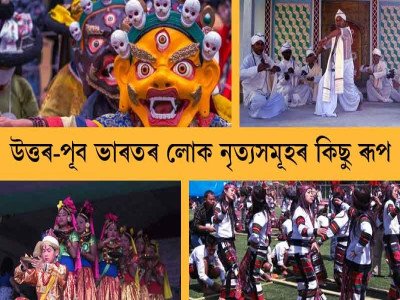
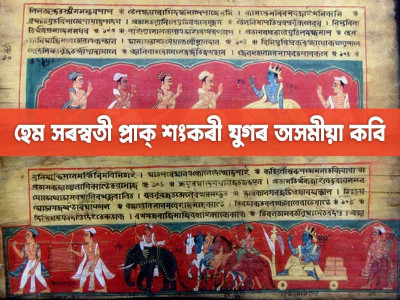
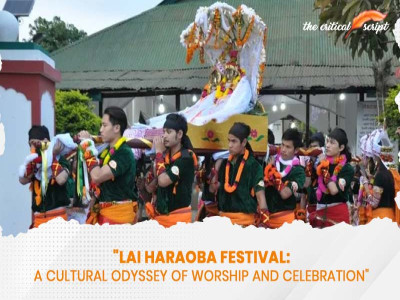

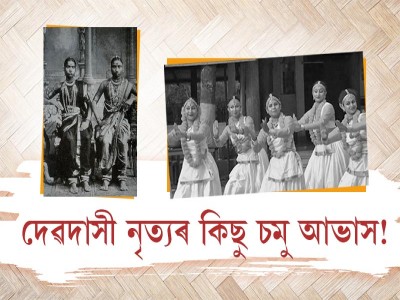









Related Comments